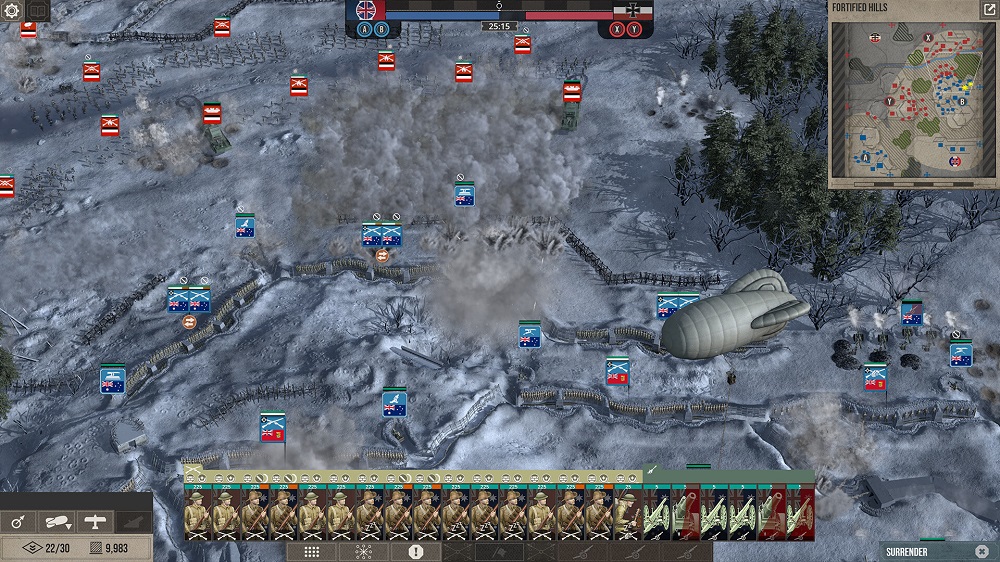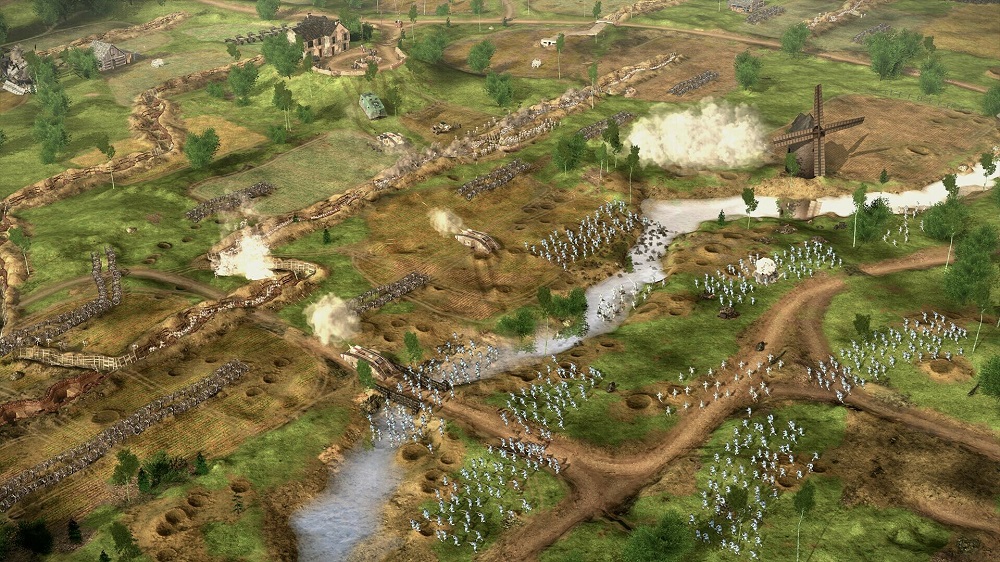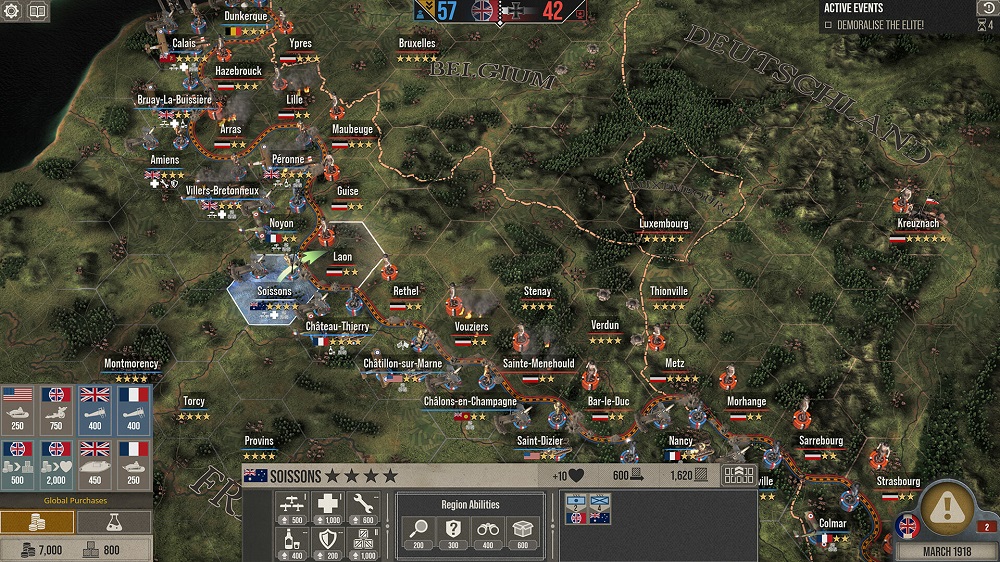The Great War: Western Front review
World War I, also known as ‘The Great War‘ was both brutal and cruel, causing around 16 million to lose their life and millions more injured as a result. There’s no way to sugar coat the devastation it left in its wake, and despite the cost of warfare being far greater than anyone could of imagined, it was, unfortunately, not the last time the world would see such a high volume of carnage and death. There have been various games that tried to encapsulate the horrors, such as Battlefield 1, yet I’ve never played a more gruelling or crushing title like The Great War: Western Front, one that opens your eyes to how painfully accurate seeing such loss must have felt like.
Whether through the vast systems of building your army, planning out strategies through the trenches at an infantry level or via aircraft and tank assault, or trying to manage your limited supplies and wealth to hopefully put an end to battle by mitigating the death of countless people within your command, there’s a lot to learn. The Great War: Western Front features a complex tutorial that throws so much at you it’s hard to remember the information you’re expected to retain, yet when it actually gets to the campaign, the learning curve isn’t as menacing as it first appears.

Where The Great War: Western Front differs from other strategic games based on actual conflicts is how it approaches its source material. The war itself was filled with horror and brutality, where later technologies didn’t help WWI escape from being little more than an intense and violent bloodbath. Watching all your hard work fall to pieces is demoralising, yet it feels relatively realistic due to how battles were decided in such close proximities by crippling explosions and rivers of bullets. The campaign sees you take control of either the Allies or Central Powers, and once you make your choice, there’re two branches of gameplay you’re tasked with managing.
The overview hexagonal map shows you the different regions which you’re in control of, and which belong to the enemy. From this viewpoint, you can choose to use espionage to spy on nearby hexagons, manage and build your supplies (a resource necessary for forging a successful army), research new technologies, and pick the next area of attack. Once you’ve decided where your next battle will take place, The Great War: Western Front becomes both an authentic and devastating experience, where one wrong decision can lead to catastrophic results. To succeed in the campaign, you need to zap the national will from your enemy and build your own, but prepare to suffer monumental losses before you start to see the tide turn.

Before each battle begins, you’re responsible for building a network of trenches that surround your control points and become a home to your troops. You can build various artillery batteries that host a variety of systems of artillery like mortars and machine gun nests; place an observation balloon that can view the enemy position and provide information on them; deploy various troop units to the trenches; bring in tanks and aircraft; and so much more. As the campaign progresses, you’ll gain research into new units and weapons, helping to change warfare in different ways, however, you’ll not be able to unlock everything. This adds a personal touch to how you build your armies and how you prefer to approach your battles.
When it comes down to the actual battles themselves, a lack of preparation can cause a lot of frustration. Trying to manage everything when the enemy begins to attack is a stressful affair, and even if you think you’re as prepared as you can be, the chances are you’re not. It’ll take a lot of failure to understand everything, but the more hours you put in will most certainly offer a satisfying outcome. As mentioned already, the realism in failure hurts you on a personal level. You can send a handful of troops into No Man’s Land believing you’ll be able to take control of a certain enemy trench, only to have them gunned down in a heartbeat. These trenches, like in WWI, are a solid form of defence, and knowing how to both approach the enemy trenches and managing your own can offer plenty of benefits when warfare enters its most grittiest stages.

It doesn’t help that controlling your army can lead to massive casualties, as soldier AI can frustrate you immensely. Why on earth did my soldiers happily try to climb out the trenches when I’m sure I never asked them to? Watching them act as lemmings in the worst possible moment is disheartening, often leading to be calling in my reinforcements to counter my heavy losses. It’s also tricky trying to manage multiple units, which sometimes led to them meandering around the battlefield, or having a rogue unit stood around like sitting ducks, just waiting to get picked off. Maybe I wasn’t aware of a certain command that could allow units to act independently, but it felt like I didn’t have as much control as I should, and when that impacts your chances of victory, it becomes a frustration I’d rather not have had.
Despite some finicky controls and troop’s AI being weaker than I would’ve liked, there’s a great deal of gratification when succeeding in battle. During the campaign, you might return to a previous location or map, and it’ll still have the network of trenches you had there the last time, reminding you of the countless deaths you witnessed. It’s haunting just as much as it is impressive, which is what much of my experience was while playing The Great War: Western Front. There’s plenty to appreciate in Petroglyph’s WWI strategy, and by pairing with the Imperial War Museums, it’s both respectful and delicate in its approach, never making light of the events of the war, yet offers a solid RTS game at the same time.




